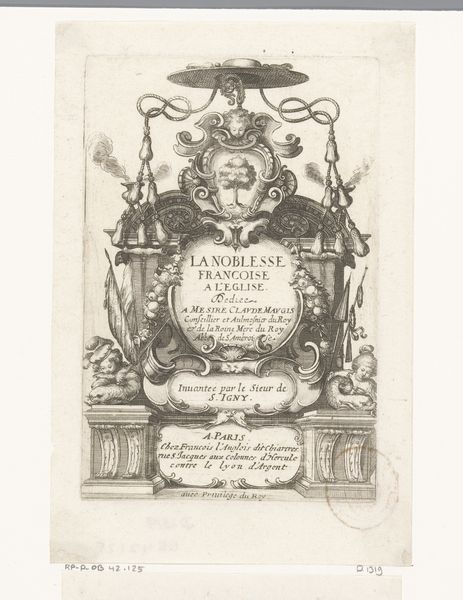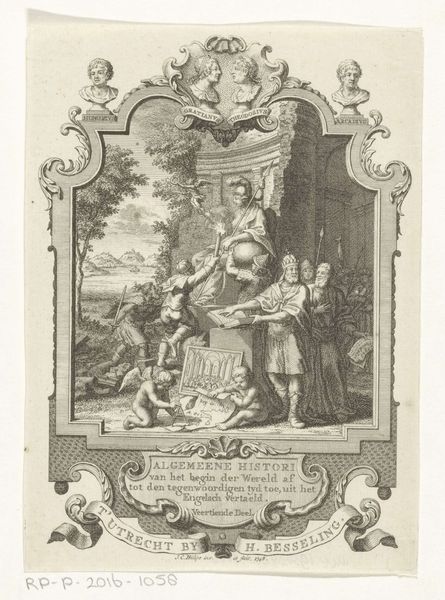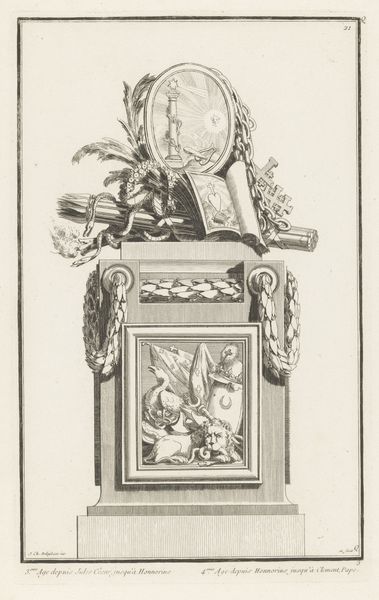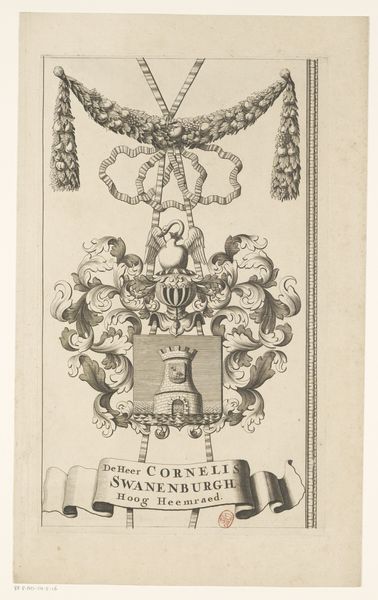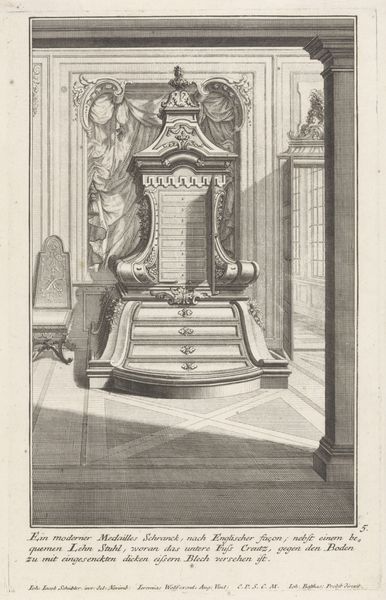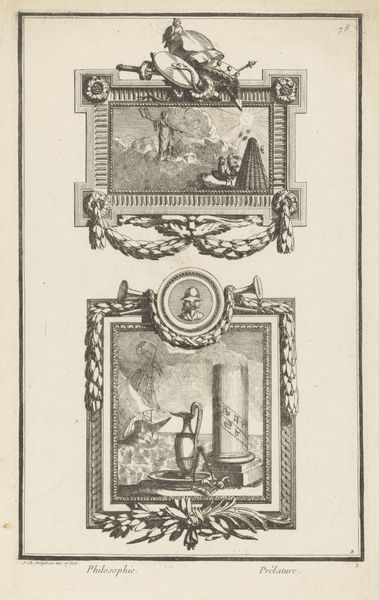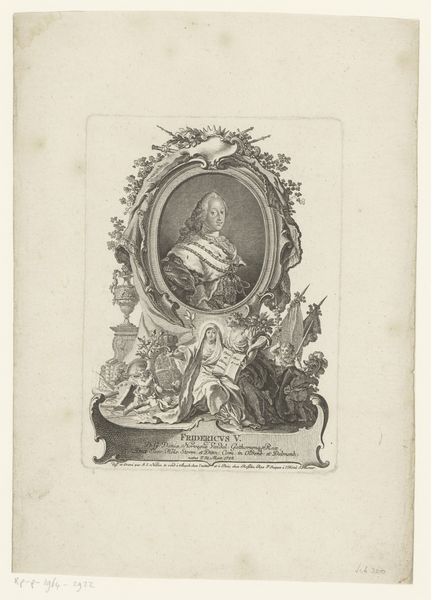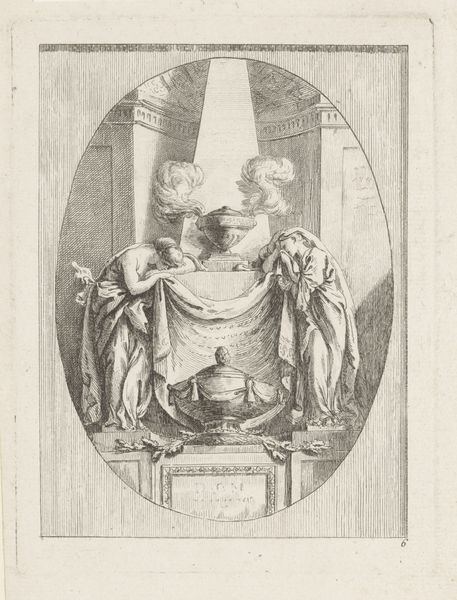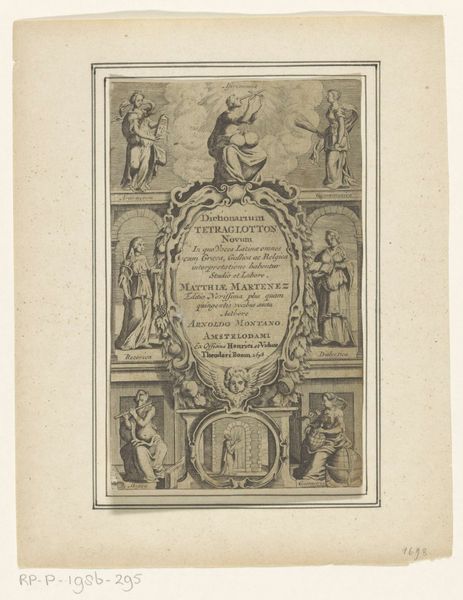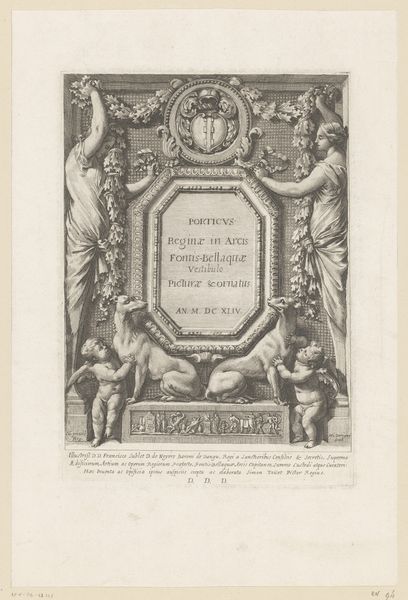
engraving
#
portrait
#
baroque
#
old engraving style
#
history-painting
#
engraving
Dimensions: height 314 mm, width 186 mm
Copyright: Rijks Museum: Open Domain
Editor: This is an engraving from 1727, a portrait bust of Maximillian II Emanuel by Franz Xaver Joseph Späth. It feels very formal, almost staged, and there are so many different elements packed in. What do you see in this piece that stands out? Curator: The dense layering of symbols and the precise execution of the engraving itself speak volumes about the production of power and prestige in the Baroque era. Consider the copperplate: each line etched and printed represents labor, time, and a specific set of skills tied to a complex socio-economic system. The artist isn't just depicting a ruler; he's crafting a material object intended to circulate within a specific market, reinforcing a specific narrative of authority. How do you think the choice of engraving as a medium affects its message and reach? Editor: I guess it means it was more reproducible and could reach a wider audience than, say, a unique painting. It's almost like early propaganda, isn't it? Curator: Precisely. And think about the materials used: the copper, the ink, the paper – each has its own history, its own network of trade and exploitation. The symbols, like the lion and the text, further extend its influence. Can you decipher them as an articulation of consumption of resources? Editor: So, even though it’s a portrait of someone powerful, the image itself speaks more about how that power was maintained and projected through materials and labor? Curator: Exactly! We're not just looking at an image of Maximillian; we're examining a carefully constructed object embedded within a complex web of production and consumption. It invites us to consider who was involved in its creation, and what message they aimed to spread through its circulation. Editor: That makes me see the portrait in a whole new way, like I’m reading a map of the art world as much as viewing a portrait of an historical figure. Thank you for your help! Curator: My pleasure. I hope you carry that insight forward in future examinations!
Comments
No comments
Be the first to comment and join the conversation on the ultimate creative platform.
